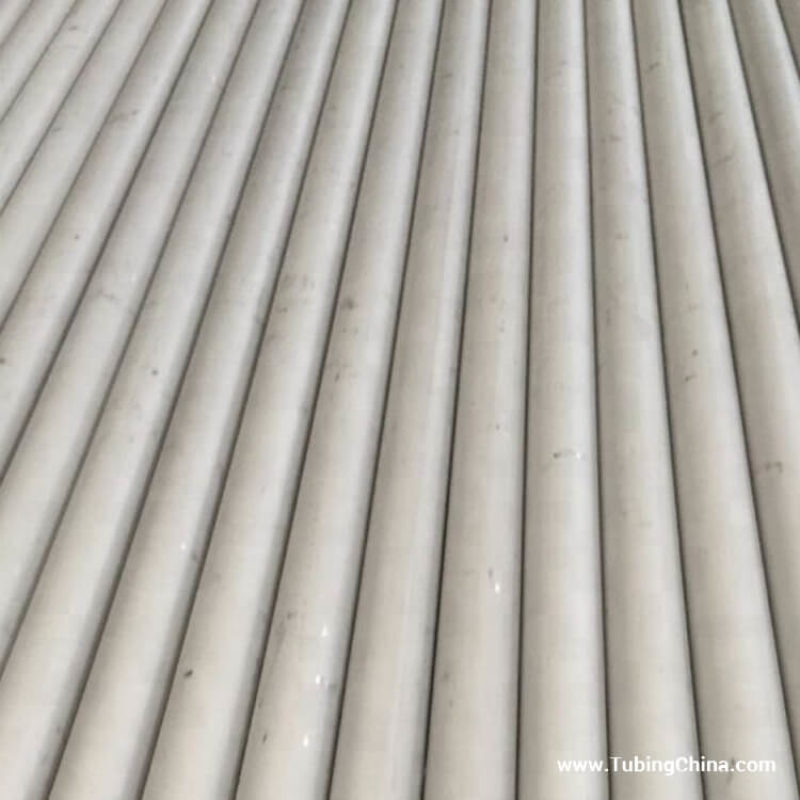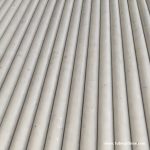High Temperature Stainless Steel Pipe / Heat Resisting Stainless Steel Tube
Request for QuotationASTM A213 SA213 304H 321H 316H 347H 309S 310S 310H S30432 Stainless Steel Pipe
These Stainless Steel Pipe have the good heat-resisting performance, is suitable in the steam environment or 550°C and the above temperature. Mainly grade include: 253MA S30815, 353MA S35315, 254SMo S31254, N04400 / Monel 400, N06600 / Inconel 600, N06601 / Inconel 601, N06617, N06625 / Inconel 625, N06690 / Inconel 690, N08800 / Incoloy 800, N08810 Incoloy 800H, N08811 Incoloy 800HT, N08825 Incoloy 825, N08020 / Alloy 20, N08367, N08028, N06985, N06022, N10276 C276.
310S Stainless steel is a combination of good strength and corrosion resistance in temperature up to 2100°F (1149°C). Due to its relatively high chromium and nickel content it is superior in most environments to 304 or 309 stainless steel.
309 Stainless Steel High& corrosion-resistant, chromium nickel grade with carbon limited to .08 to reduce carbon precipitation during welding. Maximum Recommended Service Temperature Continuous 1100°C /Intermittent 980°C
304H the carbon content is controlled to a range of 0.04-0.08 to provide improved high temperature strength to parts exposed to temperatures above 800°F (427°C)
321H advantage an excellent resistance to intergranular corrosion following exposure to temperatures in the chromium carbide precipitation range from 800°F to 1500°F (427°C to 816°C).
347H and 347HFG in higher elevated temperature allowable stresses for these stabilized alloys for ASME Boiler and Pressure Vessel Code applications. The 321 and 347 alloys have maximum use temperatures of 1500°F (816°C)
Reheater Tubes and Superheater Tubes Boiler Tube Mechanical Properties and Working Temperatures
| ASTM/ASME A/SA213 | Working temperature (°C [°F]) | Yield Strength (min. MPa) | Tensile Strength (min. MPa) | Elongation (min. %) | Hardness (max. Rockwell) |
| TP304H | 590 [1095] | 205 | 515 | 35 | 90 HRB |
| TP310H | 590 [1095] | 205 | 515 | 35 | 90 HRB |
| TP321H | 600 [1110] | 205 | 515 | 35 | 90 HRB |
| TP347/347H | 610 [1130] | 205 | 515 | 35 | 90 HRB |
| TP347HFG | 650 [1200] | 205 | 550 | 35 | 90 HRB |
| TP316H | 610 [1130] | 205 | 515 | 35 | 90 HRB |
| S30432 | 650 [1200] | 235 | 590 | 35 | 95 HRB |
| TP310HCbN | 670 [1240] | 295 | 655 | 30 | 100 HRB |
310S | 309S | 304H | 321H | 347H
Standard: ASTM A213,EN 10216-5
Anticorrosion environment: The temperature may reach 800°C
Application: Boiler,etc
310S | 309S | 304H | 321H | 347H
Standard: ASTM A213, EN 10216-5
Anticorrosion environment: The temperature may reach 800°C
Application: Boiler Tube
1.4828-X15CrNiSi20-12
Standard :SEW 470,DIN EN 10095
Equal to :Avesta 4828,Uginox R20-12,Cronifer 2012
Anticorrosion environment: The temperature may reach 1000°C , the oxygen content low azotic gas.
Apply to: Makes the furnace, the petrochemical industry
1.4841-X15CrNiSi25-21
Standard :SEW 470,DIN EN 10095
Equal to :Cronifer 2520
Anticorrosion environment: The temperature may reach 1100°C , the oxidation and the reducing gas (low sulphur content)
Apply to: Makes the furnace, the petrochemical industry
1.4876-X10NiCrAITi32-21
Standard:SEW 470,VdTUV-Wbl.412,DIN EN 10095
Equal to:Nicrofer 3220/3220H,Incoloy 800
Anticorrosion environment: The temperature may reach 1100°C , the long time barometric pressure or the vapor tension
Apply to: The heat change installment, the steam response ins tallment, make the furnace, the petrochemical industryTable 1 Short Term Tensile Strength vs Temperature (in the annealed condition except for 410)
| Temp. | 304 Tensile Strength ksi | 316 Yiled Strength ksi | 309 Tensile Strength ksi | 309S Yiled Strength ksi | 310 Tensile Strength ksi | 310S Yiled Strength ksi | 410* Tensile Strength ksi | Yiled Strength ksi | 430 Tensile Strength ksi | Yiled Strength ksi |
| Room Temp. | 84 | 42 | 90 | 45 | 90 | 45 | 110 | 85 | 75 | 50 |
| 400°F | 82 | 36 | 80 | 38 | 84 | 34 | 108 | 85 | 65 | 38 |
| 600°F | 77 | 32 | 75 | 36 | 82 | 31 | 102 | 82 | 62 | 36 |
| 800°F | 74 | 28 | 71 | 34 | 78 | 28 | 92 | 80 | 55 | 35 |
| 1000°F | 70 | 26 | 64 | 30 | 70 | 26 | 74 | 70 | 38 | 28 |
| 1200°F | 58 | 23 | 53 | 27 | 59 | 25 | 44 | 40 | 22 | 16 |
| 1400°F | 34 | 20 | 35 | 20 | 41 | 24 | — | — | 10 | 8 |
| 1600°F | 24 | 18 | 25 | 20 | 26 | 22 | — | — | 5 | 4 |
* heat treated by oil quenching from 1800° F and tempering at 1200° FTable 2 Generally Accepted Service Temperatures
| Material | Intermittent Service Temperature | Continuous Service Temperature |
| Austenitic | ||
| 304 | 1600°F (870°C) | 1700°F (925°C) |
| 316 | 1600°F (870°C) | 1700°F (925°C) |
| 309 | 1800°F (980°C) | 2000°F (1095°C) |
| 310 | 1900°F (1035°C) | 2100°F (1150°C) |
| Martensitic | ||
| 410 | 1500°F (815°C) | 1300°F (705°C) |
| 420 | 1350°F (735°C) | 1150°F (620°C) |
| Ferritic | ||
| 430 | 1600°F (870°C) | 1500°F (815°C) |



